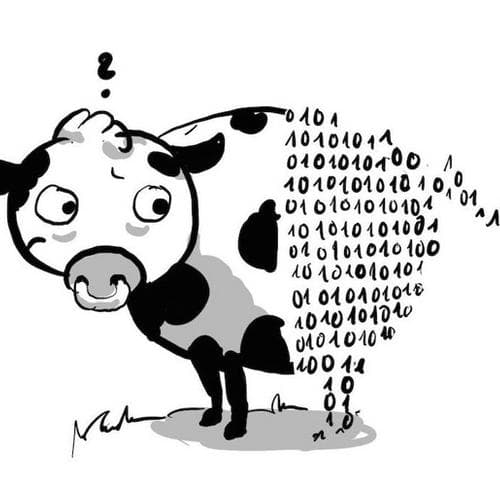Why journalism needs more data literacy
Climate crisis, Corona pandemic, digitalization: The big issues of the day are data issues. Doesn't journalism then have to start equipping itself with more data literacy?

In 2012, Simon Rogers, a British data journalist, gave a TED Talk explaining why data journalism was the new punk. Using data to tell stories was not yet widespread in newsrooms, though not completely new. Journalists became data journalists more by accident, and worked in a niche. They started as video journalists or sat on the newsdesk as they slid into data or interactive journalism.
Nerds in the newsroom
Where self-made data journalists took their first shaky steps a few years ago, there are now established teams of specialists: journalists work side by side with statisticians, designers and web developers, collecting and analyzing large amounts of data or tinkering with interactive maps and new storytelling formats. And there has been growth for some time now, people who have been trained by schools or universities to become data journalists, who can write and do journalistic research as well as program and analyze data. In many newsrooms, these teams still occupy niches. They are nerds in the newsroom, those who craft special projects with special tools and have little to do with the rest of the newsroom. This separation is breaking down where successes are creating more interest and mutual understanding.
Data-driven journalistic research finds exclusive stories and offers a factual perspective on emotionally driven debates. Data-driven journalistic formats load dry topics with excitement by translating complex facts into simple graphics or comparisons. At a time when governing bodies and businesses make decisions based on statistics, data-driven journalism builds an important bridge to interpreting the statistics relevant to those decisions, making it possible to intelligently question, show trends, initiate new debates and create new approaches – with a wide variety of possible topics and forms of presentation. Thus, data journalism skills are gradually moving from the niche to the center of the newsroom.
A lack of data literacy
Despite the many successes of established data teams, there are still many newsrooms where colleagues who want to work with data hardly get enough time and resources to do so. Or editors-in-chief who still think that handling numbers is only important in the data team, and otherwise does not need to be part of the editorial team's skills. But if the climate crisis and the Corona pandemic show journalism one thing, it's that data and statistics have become an indispensable part of reporting. They can no longer be handled only by special teams working in a niche.
Researching and interpreting statistics is no longer just a key skill for data teams, fact checkers or investigative departments. At least a basic understanding is also needed at the newsdesk and in general across all departments, so that no more embarrassing confusion between average and mean occurs. So that dangerous half-knowledge and uncritical evaluation of clever-sounding statements by politicians and supposed experts, bursting with figures, no longer lead to them simply being adopted in texts and reports.
This is why data journalism skills are not only important when a pandemic or an election is to be covered by visualizations and statistical analyses. Even the basics of data journalistic research can help journalists in their everyday work, and may even be a prerequisite for being able to fulfill journalism's mission for society in the future. After all, in a world where everything is determined by data - lockdown measures, draft laws, economic decisions - doesn't journalism also have to be data literate throughout in order to be able to observe, evaluate and classify?
